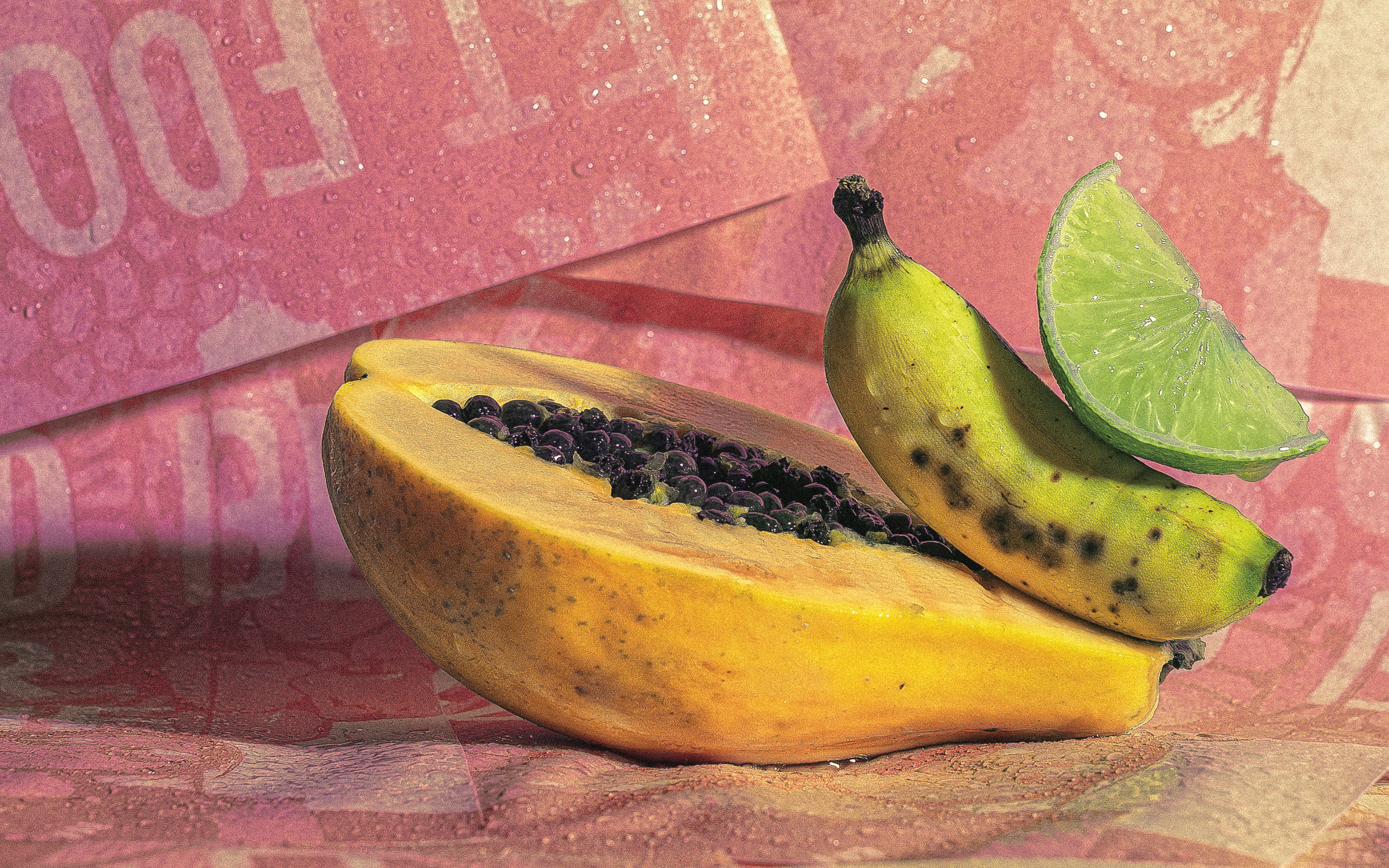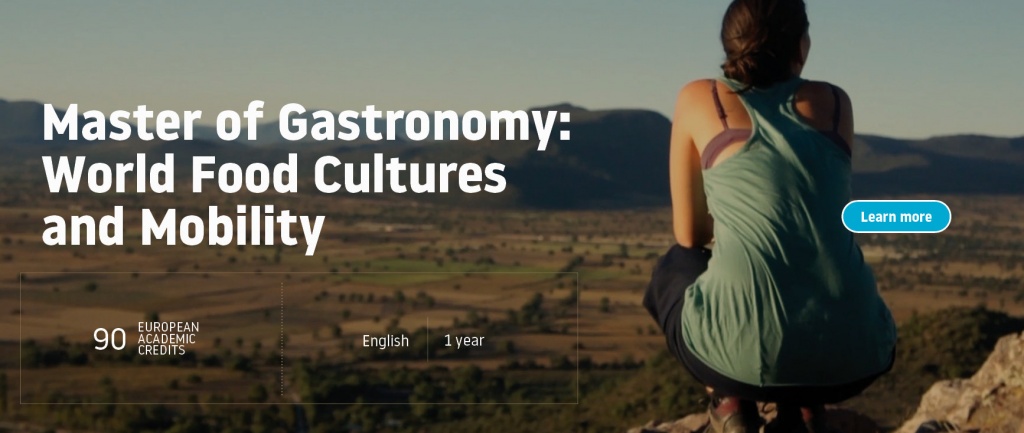The New Gastronome
Growing Dreams
by Natalia Gómez
by Natalia Gómez

Like many, I grew up thinking that fruits and vegetables originated in grocery stores, with no true understanding of the hard work that goes into growing and processing them.
I mean, it’s pretty ludicrous to think that as a twenty-year-old vegetarian university student, I had never firsthand experienced how most vegetables grow. So, you can imagine my excitement when, on an organic farm in Belgium, I finally got to harvest potatoes by myself, getting my hands dirty and revelling in the discovery of abundant spuds. From then on, a switch was turned, and I could not get enough of learning how other foods originated: corn, beans, rice, black pepper; I wanted to know about them all. But, the more I learnt, the more I was shocked by how little most of us know about how and where the food we eat grows and comes from. Something had to be done!
Fast forward a couple of years, I have a farm to call my own. After having travelled and taken courses on food and sustainability, permaculture and agroecology, as well as having attended inspiring events by different people about projects around the world, my fiancé Jackson and I are now farming two hectares (about five acres) of land in southern Costa Rica. It’s our goal to grow most of our food, regenerate the land and show others a living and growing example of homesteading and agroforestry. It’s not a small goal by any means and definitely not an easy path but one I wouldn’t exchange for anything. Let me tell you how it started!
“It’s our goal to grow most of our food, regenerate the land and show others a living and growing example of homesteading and agroforestry.”
I have already shared my ignorance about where many fruits and vegetables come from. Similarly, I have to admit that I also underestimated farming when I first began: I thought all you had to do was to plant a tree and patiently wait for it to grow until you could finally celebrate your first harvest. And plant, we did. We chose our trees for different reasons, prioritizing the ones that both Jackson and I have become obsessed with on our travels, especially to Southeast Asia. Durian, mangosteen, chempedak, pulasan, and marang are only a few of the fifty exotic fruits that we have planted or plan to put into the ground for future indulgence. Planting fruit trees is an investment that takes years to yield a harvest. Durian, for instance, can take up to ten years to fruit if planted from a seed, but as little as four from a grafted tree. We have planted both from-seed and grafted varieties and yearn for the day we will harvest our first fruit. But, in comparison to my earlier beliefs, my days are filled with far more than just idly waiting for the first fruit to appear or twiddling my thumbs. Each plant comes with its own characteristics and challenges, susceptibility to disease or insects and there is little time for boredom. This we had to learn the hard way with a beautiful passionfruit vine. We were so excited when it began to flower, so confident that we would be seeing our first fruit soon. Instead, we noticed more and more leaves disappearing and soon found the culprit that had come between us and our passionfruit: caterpillars.
For days, we removed clumps of caterpillars from beneath the leaves by hand, but the ones we missed continued to eat most of the leaves and flowers in a matter of weeks.
It was devastating! I’m happy to report that the passionfruit vine has new growth, but it is a battle we will have to continue to deal with as we go along.
One day it might be caterpillars, another it might be dealing with the impressive superpowers – and superspeed – of zompopas or leaf-cutter ants. They are especially dangerous while the trees are still young and can decimate one overnight. When we find them going for a plant or a seedling, we need to immediately take care of the matter by destroying all of the nests we find nearby, which are connected by intricate tunnels.
A. D V. E. R. T. I. S. I. N. G
But, if you tend to the trees consistently and care for their needs, prune them in shape for better growth and handling, apply diverse fertilizers, mulch and biochar, they will be healthy and reward you with many fruits.
In the early stages of our project, it was all about building the structures and deciding what to plant where, planning out where different trails should be in order for us to reach the trees and transport the many lovely fruits we would hopefully gain from them easily. We also had to decide which plants to grow next to one another in order for them to help each other grow and develop, and so all the trees had the best chance of living a happy life. We were, for example, planning on putting rows of fast-growing nitrogen-fixing legumes in between fruit trees that we could later chop and drop for use as mulch and to fertilize the trees when needed (e.g. flemingia, mimosa flowers, pigeon peas). Once we had the plan down, we could actually start digging the holes where the trees would go, adding a proper mix of soil and compost and finally planting them. From there, it was all about observation, learning what worked and what didn’t, learning how we could improve and adapt from season to season. We have discovered, for example, that the best planting moment to make sure trees develop a strong root system in time for the dry season is at the beginning of the rainy season.

We also chose many plants because we learnt that they do particularly well in this region. These include roots such as cassava and sweet potato, different legumes, bananas and perennial greens such as katuk and hibiscus. Others are useful for medicinal purposes (tea tree, aloe vera, dragon’s blood, arrowroot) or their intrinsic beauty and smell (ylang-ylang, roses and other flowers). There are those we planted with the intention of selling them as superfood powders and dried fruit and those, like moringa, that didn’t do quite as well as we had hoped. Since moringa is native to a drier climate, however, we’ll give it another shot in our dry season.
“Every day, you can detect minor changes, the first flower on a plant or the sudden change in colour. You get to eat freshly-picked herbs or find strange insects that you’ve never seen before, or simply let yourself be amazed by the intricate details and patterns of plant life.”
No matter what you are looking for, there is always a plant to fulfil every one of your wishes. Need to bring fertility back? Crotolaria juncea can help with that. Erosion control? Vetiver at your service. What about soap? During my time in India, I discovered soapberry, which can be used as all-natural soap or laundry detergent. The wonderful thing about trees and plants is that they almost always fulfil more than one purpose: they draw carbon dioxide from the atmosphere while providing us with oxygen to breathe, fruits to relish in, habitat and food for an abundance of microorganisms and wildlife, living fences, something beautiful to gaze at – the list goes on and on.
Counting them all, by now, we have planted over sixty different fruit trees, seventy bananas, a thousand pineapples, one hundred coffee plants, a couple of dozen cacao trees, and a vast array of plants of culinary, medicinal, and aesthetic value. And we are not done yet. We have plans to plant many more trees and plants to be able to feed us, our family and our community for years to come. If all goes well, our farm will be hosting retreats and workshops open to the public, where people can come and learn about our way of living and, hopefully, be inspired by it.
Needless to say, farming is hard work, and there are a lot of disappointments to be had along the way. Nevertheless, it has been a truly wonderful, life-changing and, as I told you, eye-opening experience. On hard days or when I need to take an extra moment to enjoy the beauty of it all, I go to the greenhouse. It has quickly become one of my favourite places to be, especially because we live in the tropics, and you can practically watch the plants grow. Every day, you can detect minor changes, the first flower on a plant or the sudden change in colour. You get to eat freshly-picked herbs or find strange insects that you’ve never seen before, or simply let yourself be amazed by the intricate details and patterns of plant life. I find that to be the most satisfying part of my work along with the daily grind on the farm: using the shovel, getting my hands dirty, planting trees, harvesting bananas, carrying bags of compost up and down our little jungle. Each day, Jackson and I are moving closer to our goal. And soon, I will be able to fulfil another long-standing dream: making chocolates with locally-grown (someday soon, homegrown!) cacao with the addition of herbs, flowers, and spices that we will be growing. It has been a long and windy road from the way I was brought up to my current relationship with nature, plants and farming, but every step of the way was important and influential. Sure, farming is not for everyone, but we are extremely grateful to have chosen this path and settled in this tropical paradise. And isn’t it amazing how it all started with simple curiosity, a dream, a vision? I believe that if you set the right intentions, the universe will act in peculiar ways to make it all reality, and you’ll soon find yourself where you’re truly meant to be. And, who knows, maybe for you, like us, it could be on a tropical farm!
Cover photo ©Aarón Gómez Figueroa
The opinions expressed in the articles of this magazine do not necessarily represent the views of
The New Gastronome and The University of Gastronomic Sciences of Pollenzo.